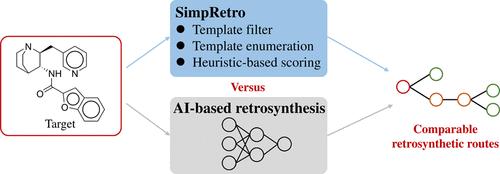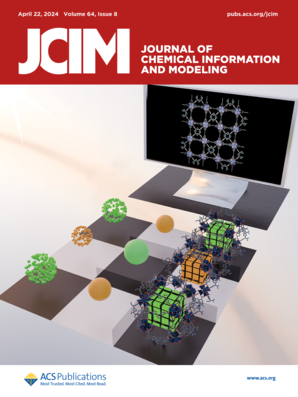Challenging Complexity with Simplicity: Rethinking the Role of Single-Step Models in Computer-Aided Synthesis Planning
IF 5.6
2区 化学
Q1 CHEMISTRY, MEDICINAL
引用次数: 0
Abstract
Computer-assisted synthesis planning has become increasingly important in drug discovery. While deep-learning models have shown remarkable progress in achieving high accuracies for single-step retrosynthetic predictions, their performances in retrosynthetic route planning need to be checked. This study compares the intricate single-step models with a straightforward template enumeration approach for retrosynthetic route planning on a real-world drug molecule data set. Despite the superior single-step accuracy of advanced models, the template enumeration method with a heuristic-based retrosynthesis knowledge score was found to surpass them in efficiency in searching the reaction space, achieving a higher or comparable solve rate within the same time frame. This counterintuitive result underscores the importance of efficiency and retrosynthesis knowledge in retrosynthesis route planning and suggests that future research should incorporate a simple template enumeration as a benchmark. It also suggests that this simple yet effective strategy should be considered alongside more complex models to better cater to the practical needs of computer-assisted synthesis planning in drug discovery.

以简单挑战复杂:重新思考单步模型在计算机辅助合成规划中的作用
计算机辅助合成规划在药物发现中变得越来越重要。虽然深度学习模型在实现单步逆合成预测的高准确度方面取得了显著进展,但它们在逆合成路线规划方面的表现仍有待检验。本研究在真实世界的药物分子数据集上,比较了复杂的单步模型和直接的模板枚举法在逆向合成路线规划中的表现。尽管高级模型的单步精确度较高,但基于启发式逆合成知识评分的模板枚举法在搜索反应空间方面的效率却超过了高级模型,在相同的时间框架内实现了更高或相当的求解率。这一违反直觉的结果强调了效率和逆合成知识在逆合成路线规划中的重要性,并建议未来的研究应以简单的模板枚举法为基准。它还表明,这种简单而有效的策略应与更复杂的模型一起考虑,以更好地满足药物发现中计算机辅助合成规划的实际需要。
本文章由计算机程序翻译,如有差异,请以英文原文为准。
求助全文
约1分钟内获得全文
求助全文
来源期刊
CiteScore
9.80
自引率
10.70%
发文量
529
审稿时长
1.4 months
期刊介绍:
The Journal of Chemical Information and Modeling publishes papers reporting new methodology and/or important applications in the fields of chemical informatics and molecular modeling. Specific topics include the representation and computer-based searching of chemical databases, molecular modeling, computer-aided molecular design of new materials, catalysts, or ligands, development of new computational methods or efficient algorithms for chemical software, and biopharmaceutical chemistry including analyses of biological activity and other issues related to drug discovery.
Astute chemists, computer scientists, and information specialists look to this monthly’s insightful research studies, programming innovations, and software reviews to keep current with advances in this integral, multidisciplinary field.
As a subscriber you’ll stay abreast of database search systems, use of graph theory in chemical problems, substructure search systems, pattern recognition and clustering, analysis of chemical and physical data, molecular modeling, graphics and natural language interfaces, bibliometric and citation analysis, and synthesis design and reactions databases.

 求助内容:
求助内容: 应助结果提醒方式:
应助结果提醒方式:


